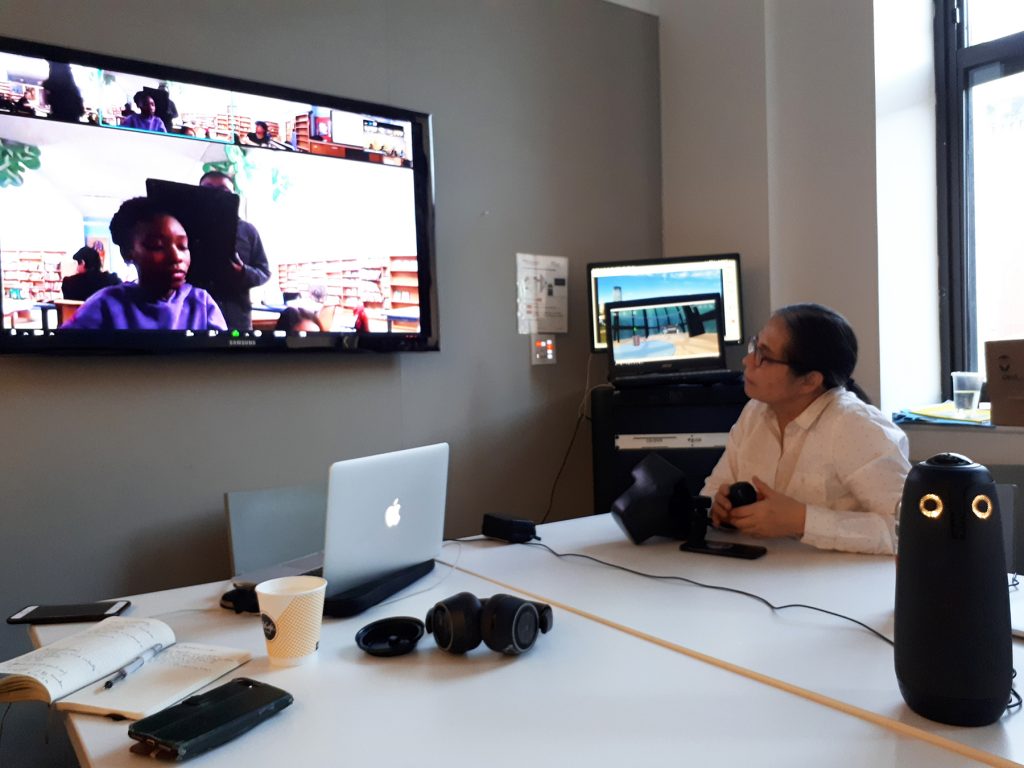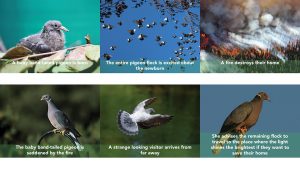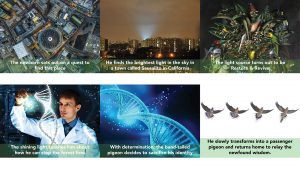‘Owl’ Presentations
Hearing the different stories the students presented to us this week was a very interesting experience. We were testing the Meeting Owl 360 this time and the storyboard presentations happened virtually through it.
Firstly, the Meeting Owl is an interesting piece of technology. It did definitely allow us to have a virtual presentation session and it did feel like genuine, authentic experience. The only downside was that sometimes the children were out of view or their storyboards were too small for us to see on the screen. But these problems also exist in the real world when a child presents their work to a group. A unique side effect of using the Meeting Owl I thought was that it forced us to gather around the owl. The children were gathered around the owl (so that we could see them through the camera) and we were kind of also leaning towards the owl in our chairs so that we can all appear on the screen. The fact that we were gathering around an object called an ‘owl’ and it resembled an owl gave the experience a warm feeling in my opinion. This, coupled with my fascination with technology in general, counter-balanced any of the more practical issues I brought up before.
In terms of the ideas conveyed through the storyboards I felt that the students all took ownership of their stories/ideas when they started their presentation and that was really nice to see. But a few of them also seemed to lose their enthusiasm halfway the presentation possibly in reaction to the reaction they were receiving from us. When I felt a bit confused about their story, it was almost like they could sense that they were confusing us, which made them lose their initial enthusiasm. But I think this is when the audience-teachers could encourage them a little bit and nudge them towards an interesting point that they raised previously for example. I feel that if they can get over this small hurdle, they would really be unstoppable.

Stories as Systems
The storyboard/systems thinking exercise we did in class was also very interesting. When I prepared my storyboard for homework, I decided on the “what should my story teach children about?” first and then tried to come up with a story. The story revolved around species extinction and how humans can upset the ecosystem without even realising it. Not many people know that Passenger Pigeons, which used to be endemic to North America, are now extinct, or that they even existed. But an organisation named Revive & Restore is investing heavily into genetic research to bring back the birds. Their genetic engineering method involves introducing Passenger Pigeon genes to the birds’ closest living genetic neighbour – the Band-Tailed Pigeon – slowly over several successive generations to finally arrive at a very close genetic proximation to Passenger Pigeons.
Below is a storyboard that attempts to convey these different elements. I do think that the storyboard could be further adapted to a more traditional folk-style storytelling using imagery that also has folk aesthetic, with a touch of magic/science.


The class exercise we did involved analysing the system suggested by the storyboard yielding many interesting connections as to who sets the fire (see the storyboard above), who is/sends the visitor bird, and what’s in it for Revive & Restore if Passenger Pigeons were brought back? We separated the different elements of the story into different realms:
the real reality (a forest fire takes place, a visitor arrives, etc.),
the intermediary – used to describe how different events are connected to one another,
conspiracy realm where hidden connections may exist between events and characters that we may not be aware of (such as the visitor bird herself being a passenger pigeon spirit who wants to be revived and thus visiting the band-tailed pigeon at a moment of despair when the forest fire had just destroyed his home; or the Revive & Restore organisation setting the fire and sending the visitor bird as part of their master plan to bring back extinct species to make lots of money like how they do in Jurassic Park; and so on).

It was interesting to dissect the original story in this way and learn about the different layers as well add interesting layers to it. I’m looking forward to going through the LCCS students’ storyboards to see if there is a synergy between the story we developed in class.